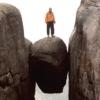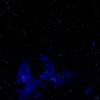Hey there. I've got a general Question about Morphing a Cube to a Sphere.
As stated in my other Threads, I am working with a Quad-Tree ( but that doesn't really mean anything) which stores the
coordinates for each vertex.
My problem is, when morphing the cube into a sphere, (realized with normalization) not every length is 1.
This goes for the Vertices at edges and corners. It seems as I could almost see the Quads edges and corners.
This, at the first look, does not seem like a big problem. My problem is, that I am going deeper the Quadtree, the nearer I am to the
Sphere. This means at a certain distance a small area of the sphere is more detailed. But when the sphere or the Cam rotates and as
it comes to the edges, the area gets wider as the edges are a little longer.
How can I solve that? I mean I am scaling those Spheres a huge time to model planets and this means a small irregularity results in a big one.








